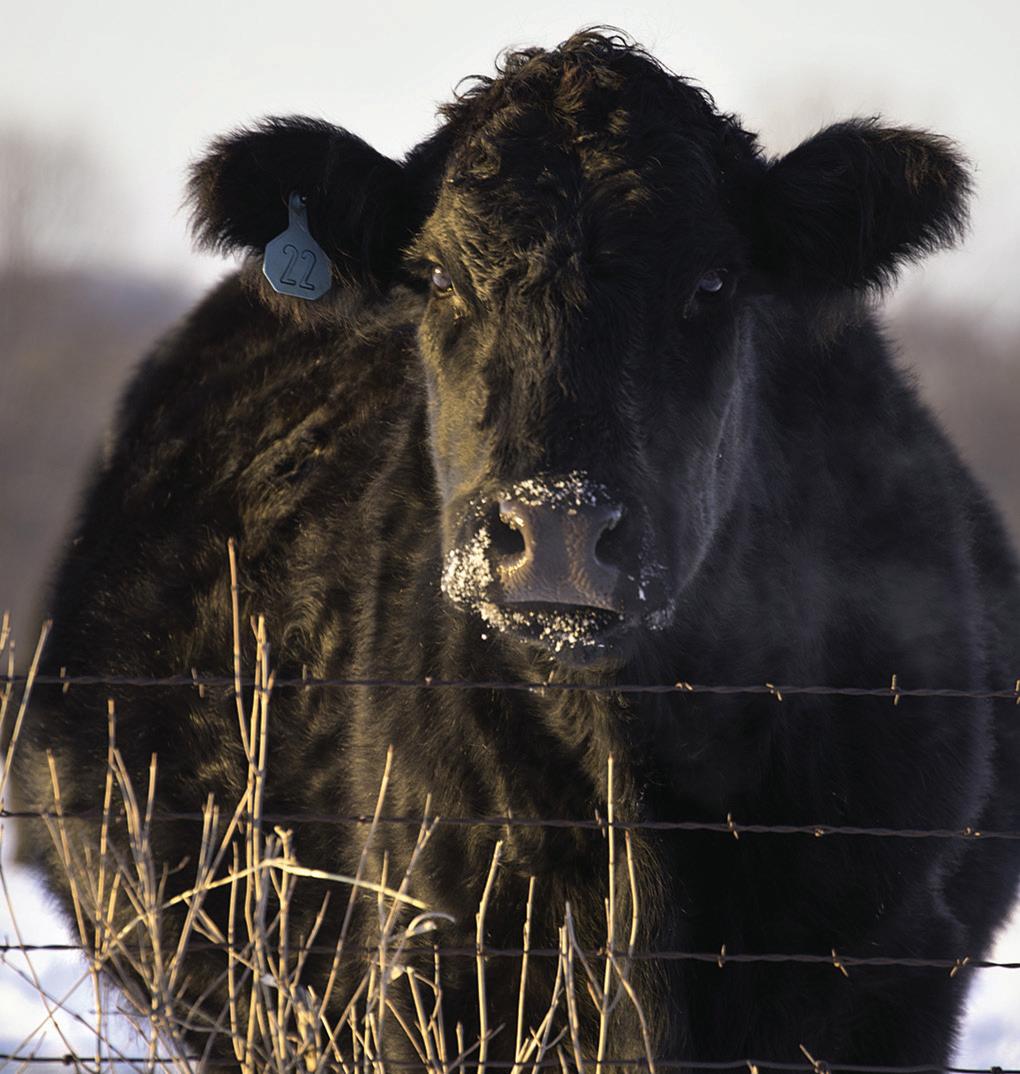































The Huron County branch of the Dairy Herd Improvement Association will be represented at the 2023 Thumb Dairy Banquet in Sandusky on Saturday, Jan. 21. It will be joining the Sanilac and St. Clair County branches, which have been represented at the banquet in previous years. “We’ve talked to the board of Huron County and it doesn’t seem they’re going to have an awards banquet this year, so we decided to include Huron County in the awards this year and make it an allThumb awards banquet and really include everyone,” said Thumb Dairy Banquet Committee member Marianne Murwaski.
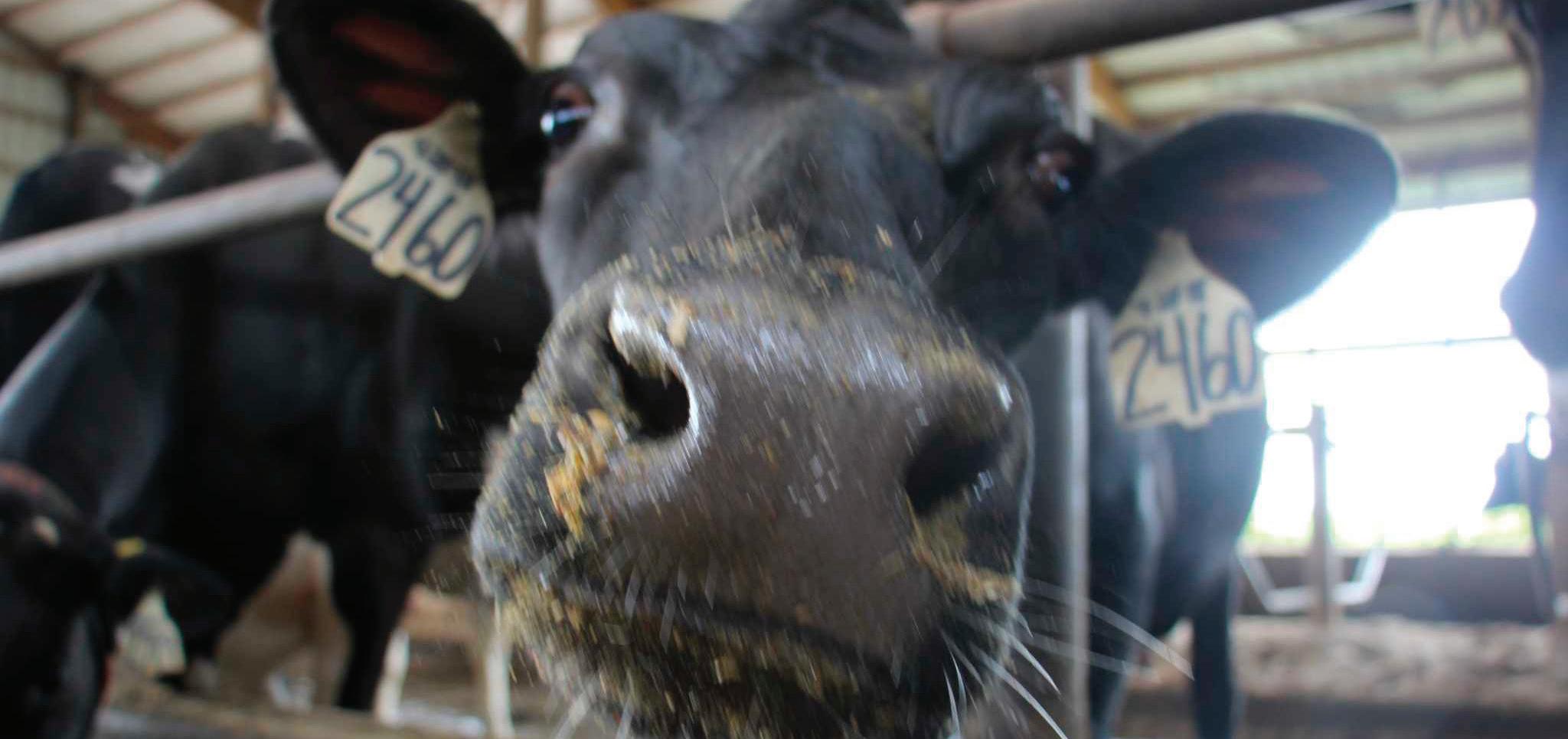
The DHIA is a nationwide organization that provides testing and information for dairy farmers regarding the health of their herds. It tests for somatic cell counts in the
milk (cells with DNA in them that often correlate to infections), the amount of milk the cows produce, their weight, and other factors. The information not only helps the farmers know what to do with their herds, but also helps the dairy world at large, as it goes into a national database. From there, it can be easily accessed to support and fund research.
However, many farms don’t use the DHIA to collect this information anymore, as the machinery will often provide it on its own. And with fewer dairy farms in Huron County and more people selling cattle instead of milking them, fewer people have been using DHIA testing.
“After so long and you only have so many members, you have to join and get everyone represented properly,” said Sebewaing dairy farmer and Huron DHIA member Eric Sneller.
The Tuscola and Lapeer County DHIAs previously disbanded for much of the same reasons, according to Murwaski, and have been represented at the dairy banquet in the same way Huron County will be.
The banquet will include awards for both herds and individual cows. The individual awards will be based on milk quality, most milk per cow per year, the lowest somatic cell count in milk, an improvement award for the number of increased pounds, and high lifetime count, or the most milk produced in one lifetime by a single cow. The herd awards will be based on size, the average for milk, fat, protein, and more.
It will also include guest speaker RJ Erskine, an author and dairy veterinarian. He’ll be talking about his published works, which are about the time he spent in Pennsylvanian Amish country as a vet.
MOLINE, Ill.
(AP) — Equipment manufacturer John Deere and the American Farm Bureau Federation have signed a memorandum of understanding that ensures farmers and ranchers have the right to repair their own farm equipment. The memorandum of understanding, signed Sunday at the federation’s convention in San Juan, Puerto Rico, follows several years of discussions between the two sides, they said in a news release.
The agreement, said federation President Zippy Duvall, “addresses a long-running issue

for farmers and ranchers when it comes to accessing tools, information and resources, while protecting John Deere’s intellectual property rights and ensuring equipment safety.”
“A piece of equipment is a major investment. Farmers must have the freedom to choose where equipment is repaired, or to repair it themselves, to help control costs,” Duvall said.
The agreement “commits John Deere to ensuring farmers and independent repair facilities have access to many of the tools and software needed” to keep the
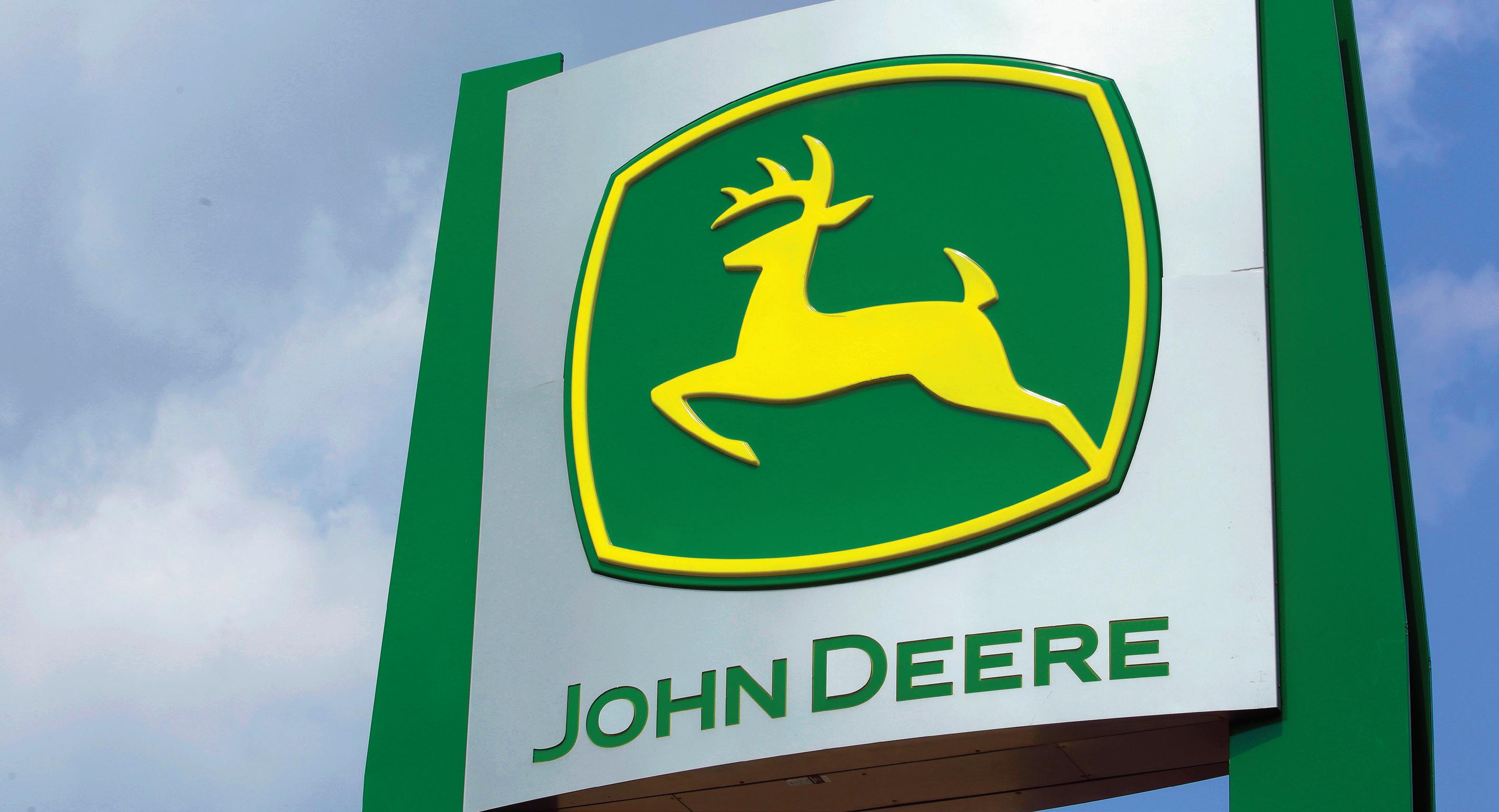
equipment running, Duvall said.
David Gilmore, John Deere’s senior vice president for farm and turf sales and marketing, said the agreement reaffirms the company’s “longstanding commitment ... to ensure our customers have the diagnostic tools and information they need to make many repairs to their machines.”
John Deere commits to engaging with farmers and dealers to resolve issues when they arise and agrees to meet with the farm bureau federation at least twice per year to evaluate progress, the agreement said.
The agreement formalizes farmers’ access to diagnostic and repair codes and to operator, parts and service manuals and product guides, the news release said. It also ensures farmers will be able to purchase diagnostic tools directly from John Deere and receive assistance from the manufacturer when ordering parts and products.
Chad Hart, an economist at Iowa State University, said he sees the memorandum of understanding as a “first step” between the two sides. “This represents an ongoing negotiation,”
Hart said, noting the agreement calls for the two to talk every six months.
“They expect fully
they’re going to have to make adjustments along the way,” he said.
Feedstuffs used to provide protein in cattle diets can vary in their protein and amino acid concentrations, amino acid composition, and site of digestion.
Protein is one of the main macronutrients needed by cattle to survive and grow.

As you may know, cattle are ruminants, and therefore have a four-compartment stomach that consists of the rumen, reticulum, omasum, and abomasum. The largest stomach compartment in ruminants is the rumen, which contains a vast diversity of
microbes. In the rumen, ingested feedstuffs undergo microbial fermentation and breakdown allowing for nutrient absorption. The rumen microbes also use the dietary carbohydrates and protein consumed by cattle to maintain, grow, and reproduce themselves. As a result, the passage of microbes from the rumen to the lower gastrointestinal tract can provide cattle with two-thirds to three quarters of their protein requirements. We can think about the metabolizable protein requirements of cattle as the sum of rumen degradable protein (RDP), microbial protein (MCP),
rumen undegradable protein (RUP), and small contributions from endogenous protein. Rumen degradable protein consists of dietary protein and amino acids, and nonprotein nitrogen (NPN), such as urea, that are used by the rumen microbes to reproduce or replicate. The microbes themselves provide the small intestine with MCP, in addition to dietary RUP that is not degraded by the rumen microbes, endogenous protein from sloughed cells within the digestive tract, and digestive enzymes reaching the small intestine.
Not all protein sources are the same because they are comprised of different concentrations of amino acids. Amino acids are the building blocks of protein, and the animal requires a certain concentration of each amino acid to meet its growth requirement. Therefore, if one amino acid is deficient or limiting, it can limit growth performance to a level that is less than when all the amino acids are supplied at their optimal concentration. Protein sources vary in digestibility and composition, but factors such diet forage to concentrate ratio, rumen
pH, and passage rate of digesta out of the rumen can influence the site of protein digestion, thus making it very complicated to predict RDP, MCP, and RUP requirements and supply.
For growing and finishing cattle, the metabolizable protein requirements are quite different and are largely influenced by dry matter feed intake and muscle (i.e., protein) gain. Therefore, smaller, and typically younger cattle (less than 660 lb) are depositing more protein for lean muscle tissue than fat compared with larger, older, finishing
cattle (greater than 660 lb). Additionally, smaller calves are capable of consuming 3.0 to 3.5% of their body weight in dry matter feed daily compared with about 2.0% for a mature finished steer or heifer. A greater feed and energy intake will result in a larger population of rumen microbes that can contribute to MCP supply in the small intestine. Considering these facts, the ratio of RDP to RUP needed in the diet of cattle increases as the cattle achieve a greater weight, where a growing steer calf (<660 lb) may require 65 to 85% RUP for a 2.2 to 3.3 lb/ day gain, while a finishing steer (>660 lb) may only require 35 to 50% RUP for the same rate of gain. In the Midwest, corn silage is a common feedstuff in growing cattle diets because of the greater energy

content compared with other forage sources. Corn silage is about 8% crude protein, with most of the crude protein being RDP. Therefore, corn silage-based diets require supplemental protein to meet the protein needs of the growing calf. Research conducted by Oney and others from the University of Nebraska investigated supplying dietary protein at different RUP concentrations to determine the effects on growing crossbred steer performance. As the percentage of RUP increased in the corn silagebased growing diet from 0.4% to 5.5% (9 to 41% of the crude protein) the average daily gain (ADG) and feed efficiency of steers improved, especially during the first five weeks of the feeding period. In another study
investigating the protein requirements of growing steers, Zinn and Shen from the University of California, Davis supplied protein via urea, fishmeal, or soybean meal to growing crossbred Brahman-influenced steer calves weighing 500 lb. As the concentration of crude protein and RUP increased due to a greater inclusion of fishmeal (1.5, 3.0 or 4.5%), ADG increased during the 56-day growing period. In a study investigating increasing RDP concentrations of finishing diets offered to heavy crossbred yearling steers (870 lb), Wagner and others from Colorado State University and Five Rivers Cattle Feeding, kept RUP constant at 5.1% of the diet so that the RDP concentration ranged from 51.4 to 64.8% RDP as a percentage of dietary
crude protein. The ADG for these finishing steers increased in a linear fashion as the percentage of RDP increased, while dry matter feed intake tended to increase, while feed efficiency did not change. Overall, smaller calves (<660 lb) require a greater percentage of crude protein, with a greater percentage of the crude protein in the diet being RUP. As these calves grow to weights >660 lb, they require a lesser percentage of dietary crude protein. Additionally, as cattle get larger and deposit more fat, they require less RUP, so a greater percentage of the crude protein can be supplied as RDP. As a result, these protein needs could be met with cheaper feed ingredients, such as urea, during the finishing period. If you are interested in


more information about the protein needs of growing cattle, check out this other article. If you have questions about this topic, you can find my contact information on the MSU Extension website and if you have any general beef related questions, you can reach out to any of the members of the MSU Extension beef team. This article was published by Michigan State University Extension. For more information, visit https://extension.msu. edu. To have a digest of information delivered straight to your email inbox, visit https://extension.msu. edu/newsletters. To contact an expert in your area, visit https://extension. msu.edu/experts, or call 888-MSUE4MI (888-6783464).

 Jonathan LaPorte MiChigan state UniVersity extension
Jonathan LaPorte MiChigan state UniVersity extension
Creating a business plan is an important part of managing a farm business. A business plan helps to evaluate alternatives, identify market opportunities and communicate ideas to potential lenders and business partners.
Starting on February 2, 2023, at 6:30 p.m. and continuing each Thursday through February 23, the Funding your farm: Selling your story in a business plan webinar series will explore key uses of
a business plan. Participants will learn how to create this valuable document for their farm and explore what lenders look for in a business plan when seeking loan financing.

Week 1: February 2, 2023 - Basics of Business


The series kicks off with a basic overview of business planning before leading in a panel discussion. Panelists
will feature lenders and producers who will share their perspectives on how business plans benefit from obtaining farm financing.
Week 2: February 9, 2023 – Business planning basics: Marketing
Having a good business strategy is the first step in your planning process. What products will be sold? Who are the competitors in the market? What unique features can distinguish our farm and its products from the rest of the market? In this session,
participants will learn how to assess market opportunities and develop a successful marketing strategy.
Week 3: February 16, 2023

A successful farm business understands how to manage their resources effectively. What will be produced by the farm? What physical resources will be needed for production? What labor will the farm need now and in the future? These questions

and more will be explored as participants review their operation and human resources strategies.
Week 4: February 23, 2023 – Business
In this final session of the series, participants will focus on how to outline their farm’s financial situation. What financial needs exist? How well has the farm performed in generating profits? What types of risks exist and how will they be managed? What is the current financial
environment and how is the farm navigating through?
The program is free to anyone who registers. To register for the Funding your farm: Selling your story in a business plan webinar, visit: https://events.anr.msu.edu/ fundingfarm23/
The webinar series is offered through a joint partnership with Michigan State University’s Center for Regional Food Systems, Beginning Farmers DEMaND Series, and GreenStone Farm Credit Services.


In addition to the webinar sessions, Michigan State University Extension will be hosting business planning office hours. These online sessions will provide an opportunity to work with business planning experts from lending institutions and MSU Extension. Sessions
are intended to help answer questions, review business plan drafts or practice your business plan pitch. More information on office hours and how to sign up will be provided during the live webinar sessions.
For more information, contact Jamie Rahrig, MSU Center for Regional Food Systems and Product Center at rahrigj1@ msu.edu or Jon LaPorte, MSU Extension and DEMaND Series at laportej@msu.edu.
This article was published by Michigan State University Extension. For more information, visit https:// extension.msu.edu. To have a digest of information delivered straight to your email inbox, visit https:// extension.msu.edu/ newsletters. To contact an expert in your area, visit https://extension. msu.edu/experts, or call 888-MSUE4MI (888-6783464).
 Jerad JaBorek MiChigan state UniVersity extension
Jerad JaBorek MiChigan state UniVersity extension
The percentage of dietary protein may need to be greater for newly received feedlot calves until feed intake recovers.
Newly received feedlot calves undergo numerous stressors that can be brought about by weaning, transportation, and commingling. These stressors can affect digestive and immune function for these calves. This article will focus on the nutritional implications these stressors can have on feed intake of newly received feedlot calves, specifically their protein requirements.
Feed and water deprivation, from abrupt weaning and learning to eat new feedstuffs or due to the time spent during transport, can affect the willingness of newly received feedlot calves to consume feed upon arrival. Feed intake during the first week of arrival in the feedlot can be considerably less than the second week for calves.
Therefore, the receiving diet should have a greater nutrient density to compensate for the decreased feed intakes of newly
received feedlot calves. The lesser feed intake observed during the first week of feedlot arrival has not been shown to be due to reduced rumen bacteria or digestibility of the consumed feed. Rather, it may be driven by a change in endocrine signaling and blood metabolite concentrations that changed due to the feed and water deprivation.
Researchers from The Ohio State University, Fluharty and Loerch, investigated the effects of different crude protein (CP) percentages and protein sources included in the receiving diet fed for the initial weeks after arrival.
In experiment one, average daily gain (ADG) and feed efficiency (G:F) improved linearly with increasing CP concentrations from 12, 14, 16, and up to 18% during the first week after feedlot entry. Dry matter feed intake (DMI) was not different across the different CP concentrations.
However, DMI was about 45% less during week one relative to week two, so CP intake ranged from 322 to 580 g/d (0.71 to 1.28 lb./d) during the first week after feedlot entry. Over the course of the six week
receiving period, feeding spraydried blood meal resulted in a greater G:F compared with soybean meal as the protein source in the diet. Rumen undegradable protein sources may be more beneficial when the supply of amino acids is low and DMI is less than 2% of their body weight. This experiment demonstrated that newly received calves weighing 525 pounds benefited from greater concentrations (16 and 18%) of CP during the first week after entering the feedlot. In experiment two, investigated greater CP concentrations with soybean meal and blood meal each supplying 50% of the CP at 11, 14, 17, 20, 23, or 26% of the diet dry matter. The DMI of calves did not differ across the different CP concentrations, but DMI was 48% less during week one relative to week two. Crude protein intake increased from 265 to 738 g/d (0.58 to 1.63 lb./d), with only the 23 and 26% CP concentrations meeting the protein requirements of 525 lb. calves trying to achieve a 3 lb./d ADG. Not surprisingly, ADG increased linearly with the 23 and 26% CP treatments
having the greatest ADG during week one. Interestingly, G:F demonstrated a quadratic response where 17 and 20% CP treatments were greatest during week one and for ADG and G:F across the entire four week receiving period on average. Therefore, the results indicate that about 20% CP resulted in the best feedlot performance during the receiving period.
Experiment three investigated changing dietary CP concentrations after week one and week two when feed intake appeared to be the lowest. Crude protein concentrations were 23% for week one, 17% for week two, and 12.5% for week three. In addition, different feedstuffs were investigated to supply dietary protein, with either soybean meal, blood meal, corn gluten meal, or fish meal used. Feed intake was 40 to 48% less during week one compared with week two. The different protein sources did not result in any significant differences in feedlot performance during the four week receiving period. As long as metabolizable protein requirements are being met, a wide variety of protein sources
may be used to meet dietary protein needs of newly received feedlot calves.
It is not uncommon for newly received feedlot calves to have feed intakes 0.5 to 1.5 % of their body weight during the first week. However, providing these stressed calves adequate energy and protein to meet their nutrient needs will improve their ability to increase their feed intake and combat potential illnesses. Providing calves a preconditioning period before feedlot entry can greatly reduce weaning stress, expose and acclimate calves to the feedstuffs used in feedlots, and accumulate energy reserves prior to transport, which will allow for an easier transition into the feedlot for newly received calves.
If you have questions about this topic you can find my contact information on the Michigan State University Extension website and if you have any general beef related questions you can reach out to any of the members of the MSU Extension beef team. This article originally appeared in the Michigan Cattleman’s Magazine.
Tips for managing small flocks during the colder months.

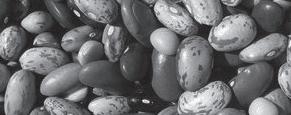
Michigan State University Extension recognizes that cold weather management can be a challenge for even the most seasoned poultry owners. There is no substitute for good management that takes into consideration a variety of factors.
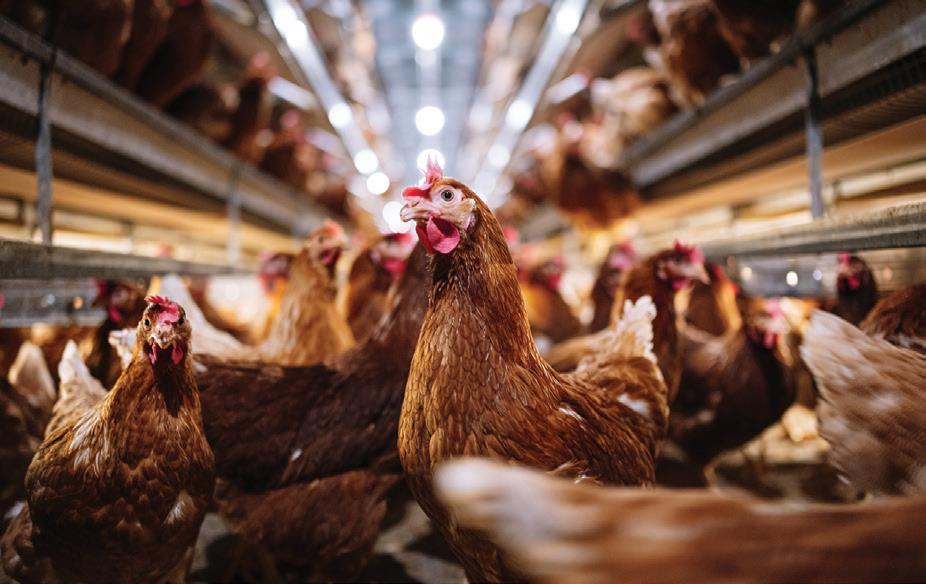
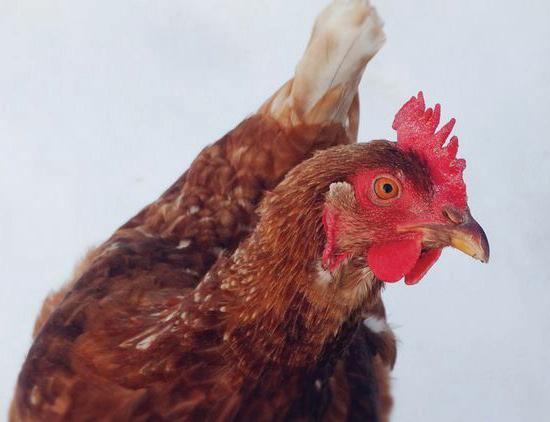
First, temperature and wind are the most critical environmental concerns that flock owners must be aware of. Chickens begin to pick up temperature changes around 60 degrees Fahrenheit. A bird’s comb, waddles, face, feet and other non-protected body parts are sensitive to temperature changes. Making sure that your coop is draft free, yet well ventilated, is key in keeping a comfortable environment for your birds. There are many methods to cut down wind such
as creating wind breaks that will protect the coop from the most common prevailing winds and identifying areas in the coop where there are drafts.
Brigid McCrea, PhD, small flock specialist, from Auburn University and Zac Williams, PhD, Michigan State University (MSU) poultry specialist dispel many of those myths and give practical, best practices for poultry owners in the “Poultry Talk 101—Cold Weather Prep for Small and Hobby Flocks” podcast. Here are some other tips from Brigid McCrea:
• Coop bedding should be kept clean and doubled from what is used during the summer months to insulate the floor of the coop and protect again frostbite on the toes.


• Daily observation is critical so that birds exposed body parts can be monitored for frost bite.
• Choose breeds suited for
your climate.

• Provide free choice feed during the winter months; chickens should consume 50% more feed than during the warmer months.

• Provide fresh, clean water every day and make sure to clean the water troughs every day.
The Poultry Talk 101 podcast has a variety of episodes that provide science based educational content on poultry production from Michigan State University and guests. This article was published by Michigan State University Extension. For more information, visit https:// extension.msu.edu. To have a digest of information delivered straight to your email inbox, visit https://extension.msu. edu/newsletters. To contact an expert in your area, visit https://extension.msu.edu/ experts, or call 888-MSUE4MI (888-678-3464).

A webinar series from MSU Extension to assist farmers in choosing the best Farm Bill program to fit their needs.
For the upcoming 2023 production year, producers once again have the opportunity to select which Farm Bill program will work best for their farms. Will it be Price Loss Coverage (PLC) or Agricultural Loss Coverage (ARC) for your farm?
Answering that question is a bit more complex when considering the importance of crop insurance options that tie into farm bill programs. The Supplemental Coverage Option (SCO) and the Enhanced Coverage Option (ECO) are key factors in determining which program may be best. These countybased revenue insurance additions would be on top of what producers have selected for individual coverage on their farms up to 86% for SCO and from 86% up to 95% with ECO.
On January 17, 2023 at 11:00 a.m. and again on February 21, 2023 at 6:30 p.m., experts from Michigan State University Extension and Eagle Valley Ag Risk Advisors, LLC will provide you with the best information to help you evaluate your risk and make your Farm Bill decisions.
At these meetings producers will:
• Hear highlights from the 2023 decisions and how those decisions played out across the state
• Learn the latest in
policy and impacts of programs
• Learn about current and new crop insurance options available to you
• Work through case examples using the MSU Extension Farm Bill Calculator to help make better decisions on ARC versus PLC as each crop and FSA farm number may result in a different choice

• Discuss specific program details with experts
Featured Experts:
• Molly Sears, Assistant Professor, Michigan State University Department of Agricultural, Food, and Resource Economics
• Roger Betz, Michigan State University Extension Senior Educator
• Jon LaPorte, Michigan State University Extension Educator
• Elliot Alfredson, Eagle Valley Ag Risk Advisors, LLC
Participation in these meetings is free, but producers are asked to register at https://events. anr.msu.edu/farmbill23/.
Michigan State University Extension provides farmers with assistance in navigating Farm Bill programs by working with other sources around the country. As new information becomes available MSU Extension will inform and update farmers through this site, email newsletters and informational events hosted throughout the state of Michigan. For the latest in Farm Bill information, visit the MSU Extension Farm
Bill homepage at: www. canr.msu.edu/farm_bill/ This article was published by Michigan State University Extension. For more information, visit
https://extension.msu. edu. To have a digest of information delivered straight to your email inbox, visit https://extension.msu. edu/newsletters. To contact
an expert in your area, visit https://extension. msu.edu/experts, or call 888-MSUE4MI (888-6783464).
An inviting backyard can serve as a welcome retreat from the hustle and bustle of daily life. After a long day at the office or an exhausting day spent transporting kids to and fro, it’s hard to resist the allure of a peaceful outdoor space in which to unwind.
Privacy is a key component of any backyard oasis. Some homes may be so remote that privacy isn’t an issue. But many suburban homeowners recognize they might need to tweak their landscapes if they hope to create a private oasis outside.

Most homeowners looking to create more privacy on their property will have to choose between fencing and planting. Fencing provides immediate privacy because, once it’s installed, no one can see into the yard. Fencing also doesn’t require watering or other immediate upkeep, which will be necessary when planting to ensure tree roots can establish themselves. But planting has its benefits as well.
Planting for privacy is essentially creating a living fence that can grow over time and provide even more privacy as trees reach maturity. Plants also tend to be less costly
than fencing. The home renovation experts at BobVila.com estimate that fencing projects typically cost between $1,667 and $4,075. However, fencing projects can cost considerably more than $4,000, especially for homeowners with large properties they want to enclose. Large, mature trees can be expensive, though it’s unlikely they will cost as much as fencing. In addition, fencing requires more maintenance and will potentially need to be replaced, while native trees won’t require much upkeep and can last for generations.

Homeowners who choose to plant for privacy will next have to decide which type of plants to add to their properties. Evergreens provide year-round privacy because they don’t shed their leaves, so these are the ones most often chosen when creating a living fence. A number of varieties of evergreen trees can do the job, but it’s important that homeowners consult with a landscape architect prior to choosing trees so they can ensure the trees will thrive when faced with the growing conditions on their properties. During such

a consultation, homeowners may discuss the following popular privacy trees.

• Leyland cypress: The Arbor Day Foundation® notes that the Leyland cypress is popular for hedges and boundaries, likely because a typical tree reaches a mature height of 60’-70’ and can spread as wide as 25’. The Leyland cypress grows fast, which may appeal to homeowners who don’t want to wait to establish privacy.
• Green Giant Arborvitae: There are different varieties of the arborvitae, but the Green Giant tends to be the go-to option for privacy. The ADF notes that Green Giants will grow up to three feet per year until they reach maturity, providing a fast-growing option for privacy planters. The Green Giant can spread as wide as 20 feet at maturity, which is another attribute that makes it so popular among homeowners desiring privacy.
• Eastern White Pine: The ADF notes that the eastern white pine, which can reach heights as high as 80 feet, is favored in spacious yards.
That’s likely due to its height and its potential spread, which can reach 40 feet. Homeowners who choose the eastern white pine might like it for its resemblance to a Christmas tree, and in fact it is widely used for that purpose. The privacy provided by the eastern white pine is significant, but it might be best suited to especially large properties.
Whether it’s fencing or planting, homeowners have many options to consider as they seek to create more privacy on their properties.
